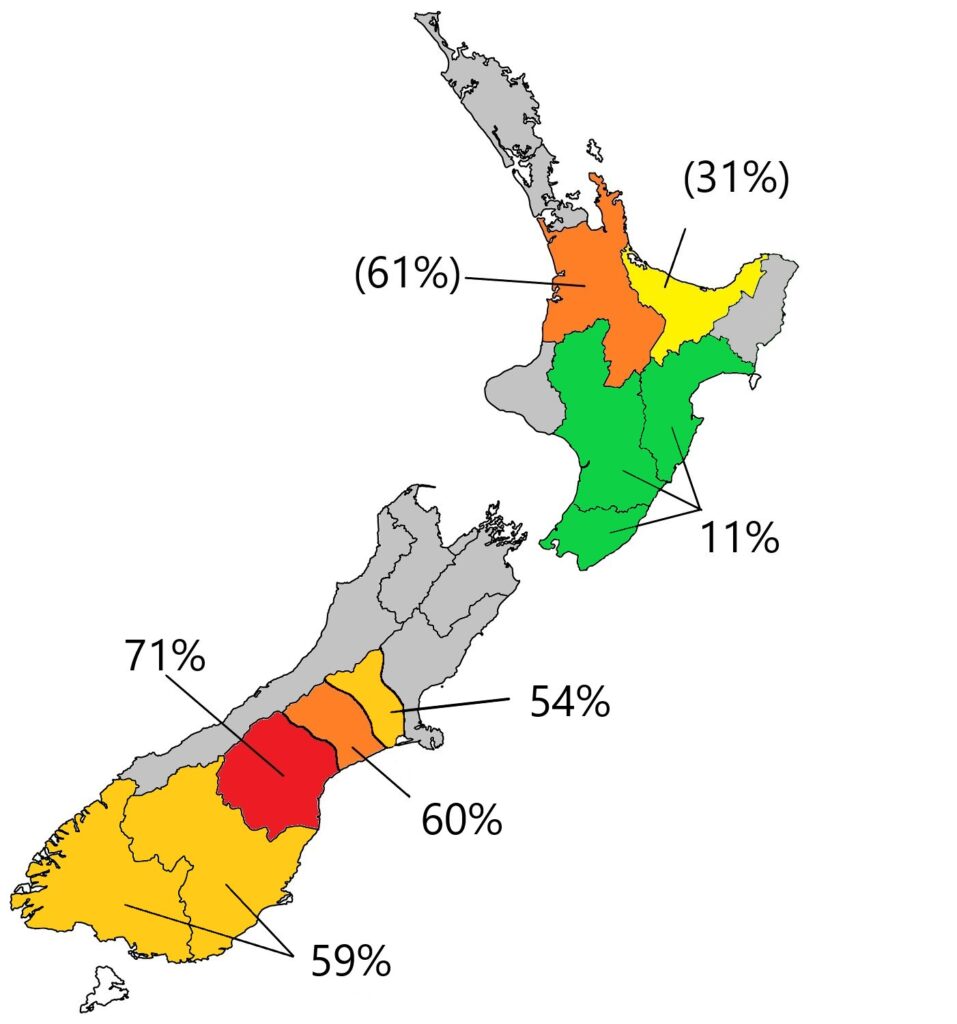Five years of random weed surveys have identified the extent of herbicide resistance in weeds on arable farms in New Zealand, with imported seed lots providing a pathway for the resistance.
The region with the highest level of herbicide resistance was South Canterbury, with 71% of farms recording at least one instance of herbicide-resistant weed.
In contrast, in the eastern North Island, herbicide-resistant weeds were found on just 11% of farms.
While it has been suspected for some time, the numbers prove that herbicide-resistant weeds are widespread on arable farms, Foundation for Arable Research (FAR) senior field officer Ben Harvey said – “with very high levels in some regions”.
The confirmation comes after five years of random herbicide-resistant weed surveys on arable farms, each year in a different region taking in Wairarapa, Manawatū, Hawke’s Bay, Canterbury, South Otago and Southland.
Farms were randomly selected with the aim of visiting 20%-30% of all arable farms in each region.
Surveys were carried out in January prior to harvest when weeds that had survived herbicide application were most likely to have produced viable seed.
Seed was collected from any weeds that appeared to have survived normal herbicide application, with a focus on grass species that had known resistance overseas.
Seeds were sent to AgResearch to be grown out and the resulting plants tested for resistance to a range of appropriate herbicides. About 4000 individual plant herbicide interactions were tested from 63 species of weed collected across 168 farms.
FAR has published an Arable Extra summarising the results. It shows all cases of resistant weeds were to herbicides in Mode-of-Action Groups 1 and 2, with regions often having their own difficult-to-control weeds.
The most common resistant weed is the ryegrass Lolium species.
Group 1 herbicides are used to control grass weeds in a range of broadleaf and cereal crops. Group 2 herbicides have activity on a wide range of grass and broadleaf weeds and are also used widely in cereals.
Both classes of herbicides are used post-emergence on the weeds.
Worldwide, resistance to Group 2 herbicides is the most widespread form of herbicide resistance.

No resistance to glyphosate (Group 9), the world’s most popular herbicide, was recorded on arable farms, although it has been detected outside of the random surveys.
As well as South Canterbury, also recording a high level of resistance were Mid Canterbury farms at 60%, the Selwyn District, 54% and Southland 59%.
Harvey said regional differences appear to relate to differences in farming systems, as areas where crop rotation options are limited tend to have higher levels of resistance.
Other factors include whether pasture is commonly included in rotations, the prevalence of grass seed crops, particularly ryegrass, in the rotation, and whether spring crops, which can disrupt weed life cycles, are commonly included in rotations.
Ryegrass, both annual and perennial, is the main offender with resistance to Group 1 and 2 herbicides.
“Resistance seems to be everywhere, but especially in South Canterbury.”
Imported ryegrass seed lots have provided a pathway for introducing herbicide resistance onto NZ farms.
In addition, rare individual plants can gain resistance-conferring mutations.
Wild oats is another weed growers need to keep on top of, particularly in Canterbury, with rogueing required to eliminate plants resistant to Group 1 herbicides.
Southland has two particularly problematic weeds: chickweed, which is resistant to chlorsulfuron (Glean); and Rayless chamomile, resistant to Group 2 herbicides.
In North Island maize-growing areas, fathen is resistant to atrazine.
While arable growers in Canterbury, Southland and Otago are more likely to be affected by herbicide resistance, Harvey said it is worth noting that all the regions surveyed had some degree of resistance.
“Growers should always be vigilant and follow up on any patches of weeds that appear to have survived herbicide application.”
Assistance is available through FAR and agrichemical company representatives.
More funding is being sought to further investigate integrated weed management to support growers to find ways to combat herbicide resistant weeds on their farms.










